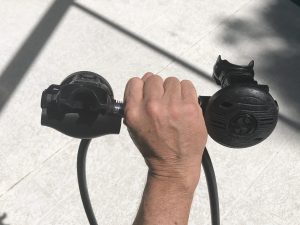Version 2.0 of the 2020 Standards and Policies
Be on the lookout for a revised version of NAUI Standards & Policies Manual in early summer. The changes focus on the Technical Course updates announced at DEMA 2019 and reflect the course flow that was approved by the Board of Directors. Just as you have seen in previous versions, the changes are listed in the “Record of Changes” in the S&P and will be highlighted in red in the table of contents.
Conducting Courses Following COVID-19
The NAUI Training Department wants to address the most common inquiries as facilities and instructors prepare to reopen following COVID-19. Below we will list the questions and solutions or recommendations to the majority of your concerns. At all times you as the instructor should utilize the academic freedom that you have as a NAUI Instructor to identify what will work best for your facilities and students, while following all the recommendations of local, state, and federal officials.
NAUI Recommendations
- Medical Release for those that have been diagnosed or hospitalized
- If a student has been hospitalized for any reason in the previous 12-months, we recommend that that they obtain a medical release prior to diving signed by a licensed physician.
- If a student has had COVID-19, many medical professionals would consider it an “other chest disease or chest surgery” as listed on the medical questionnaire and would require a medical release from a licensed physician prior to diving.
- Social Distancing
- Follow the practices advised by officials in your area.
- Limit the required classroom time by using eLearning and video conferencing.
- Equipment cleaning and disinfection
- Manufacturers state that most modern diving equipment is made with antimicrobial materials to mitigate the concern of microbial growth on or in the equipment, although this is not a benefit with viruses.
- It is important to remember as always, any effort to disinfect equipment is immediately impacted as soon as you enter a natural body of water or improperly maintained pool. The equipment is exposed to any existing pathogen in the environment.
- Shared equipment (or personal equipment if you so choose) should be disinfected following the recommendations from the manufacturer and the Divers Alert Network (DAN) (see additional resource links below).
- Air sharing drill using an alternative air source (required skill for several courses)
- It should be performed on a dive independent of other air sharing or regulator exchange skills.
- Sanitize the regulators to be used, descend, execute the skill as normal. Since an alternate air source is used there is no direct concern for contamination.
- In the event an integrated second stage/inflator is being used, then the divers should descend on their integrated air source and conduct the drill using the sanitized primary regulator as the alternative air source.
- If your configuration utilizes a primary long hose, the recommendation is to descend on your short hose and hand off the previously disinfected long hose for the drill
- Buddy Breathing (required skill for leadership courses)
- Buddy breathing is only a required skill in leadership courses, it should not be required of students in any other course until further notice.
- One possible technique is to simulate by having the two
 candidates grip both their regulator hoses facing the regulators back to back and conduct the skill each breathing off their own regulator.
candidates grip both their regulator hoses facing the regulators back to back and conduct the skill each breathing off their own regulator. - If the course director would prefer the drill may be omitted if the candidate’s skill and ability otherwise is exemplary. Omission is an option till January 1, 2021, or unless otherwise directed by the standards or additional communication from the training department.
- Unconscious Diver Rescues and Rescue Breathing
- One possible solution is to break the skill into two sections.
- The rescuer should ascend with the unconscious diver, establish buoyancy, and remove equipment as is traditional. The rescuer should retain all equipment including mask snorkel and regulator so there is no direct concern.
- Rescue breaths, if available the unconscious diver should be replaced with a training-dummy at this point. If that is not available have the divers retain mask snorkel and regulators and touch cheeks to simulate rescue breaths.
- First Aid and CPR courses
- Follow the aforementioned social distancing recommendations
- For physical skills have students wear face masks when contact is required.
- Rescue breathing and CPR skills should be practiced on training dummies with new or disinfected lungs for each student.
- Swimming pools
- Properly maintained pools do not pose any risk as sanitation of the water is adequate to address any concern.
- The most significant risk are the common areas at pools such as locker rooms and restrooms, which should be disinfected regularly, and social distancing should be maintained in these areas.
- Maintain social distancing while at the surface of the pool
- Dive Vessels
- Social distancing practices should be followed while onboard the vessel and the vessel should be disinfected regularly.
- Additional Resources:
- Divers Alert Network – excellent source of medical information during this evolving time.
- NAUI Training Department – Questions about NAUI S&P or conducting courses
- One possible solution is to break the skill into two sections.


